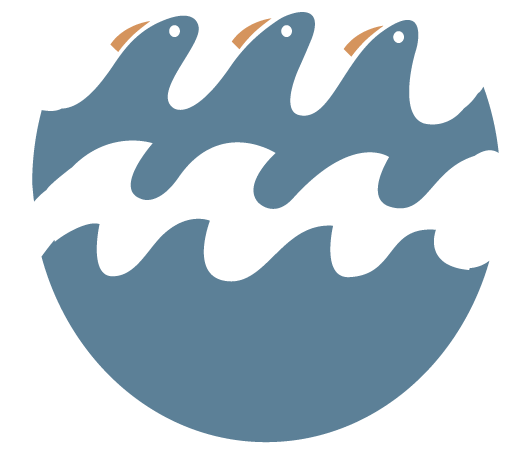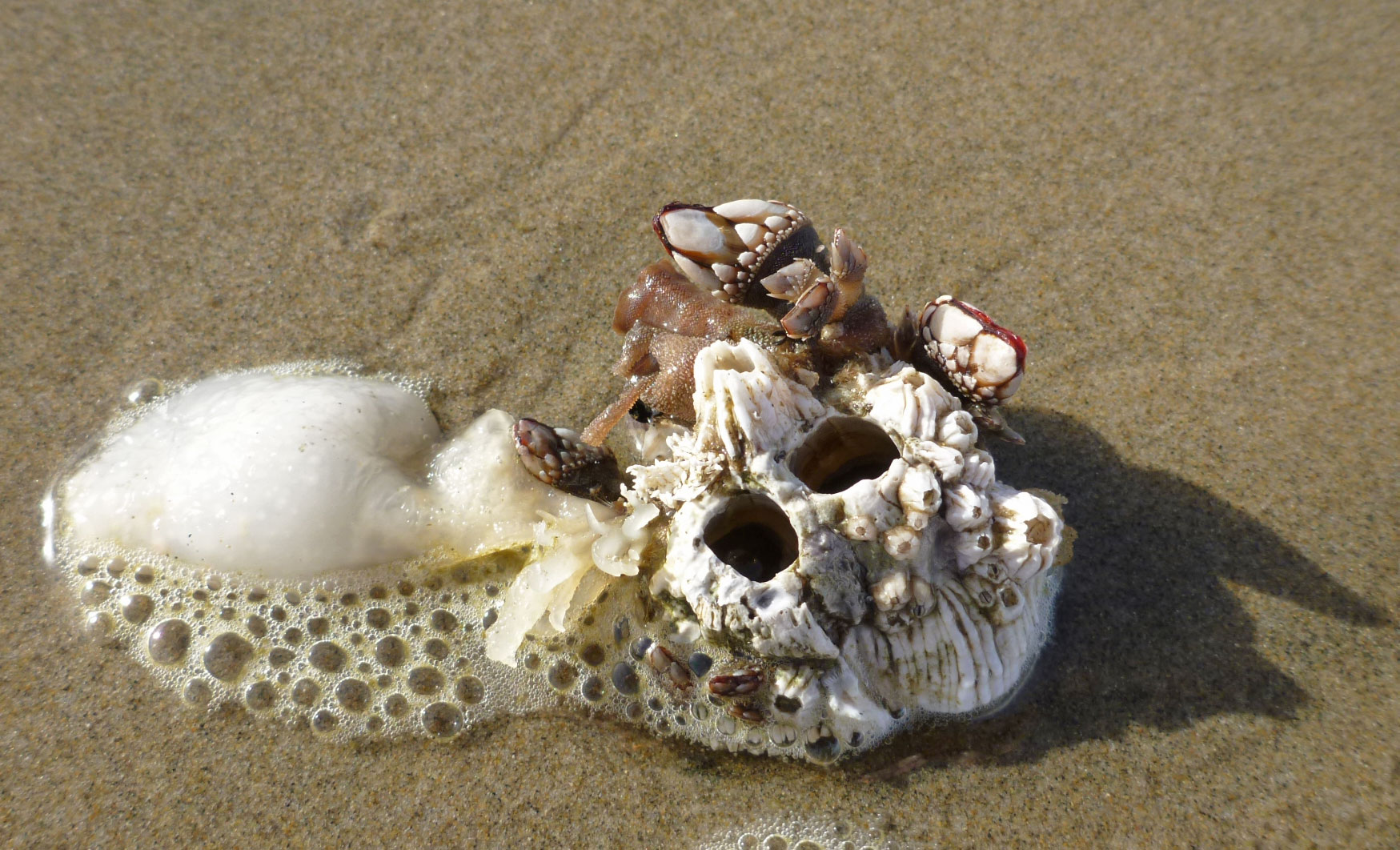
There are plenty of impacts in the surf zone, and barnacles sometimes break away from their rocky homes and wash up on the beaches. These thatched barnacles, Semibalanus cariosus, the ones piled one upon the other, are among the most common barnacle finds along the wrack line. Here, you can see at least three age classes, along with another barnacle hitchhiker, the goose barnacle, Pollicipes polymerus. Below I’ve assembled some images illustrating these and other barnacles I have encountered awash on the beaches and intact on the rocks.
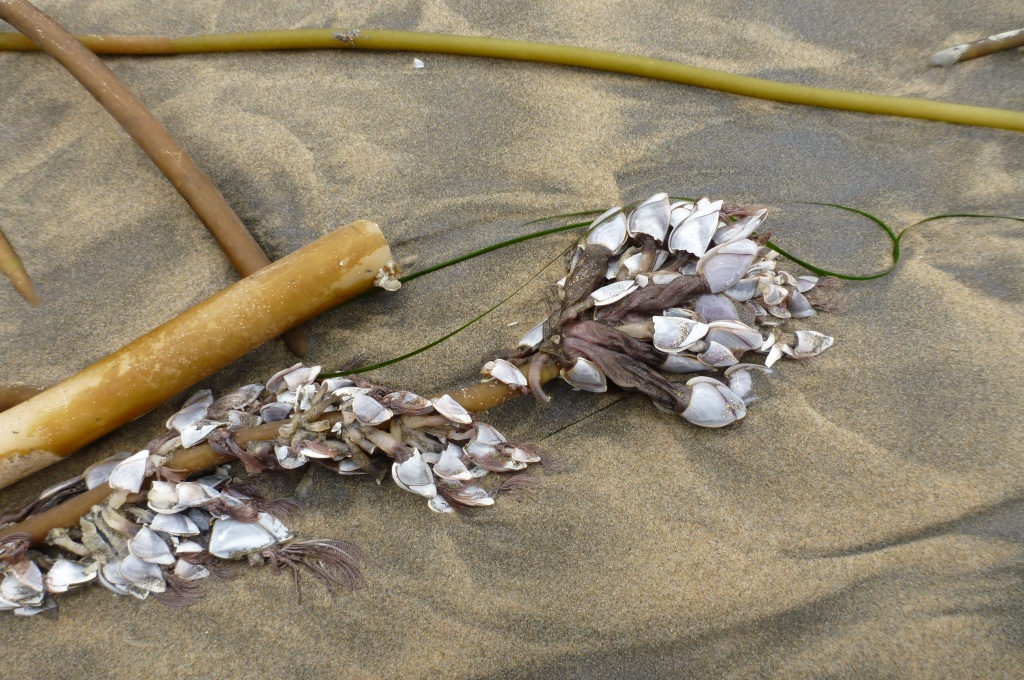
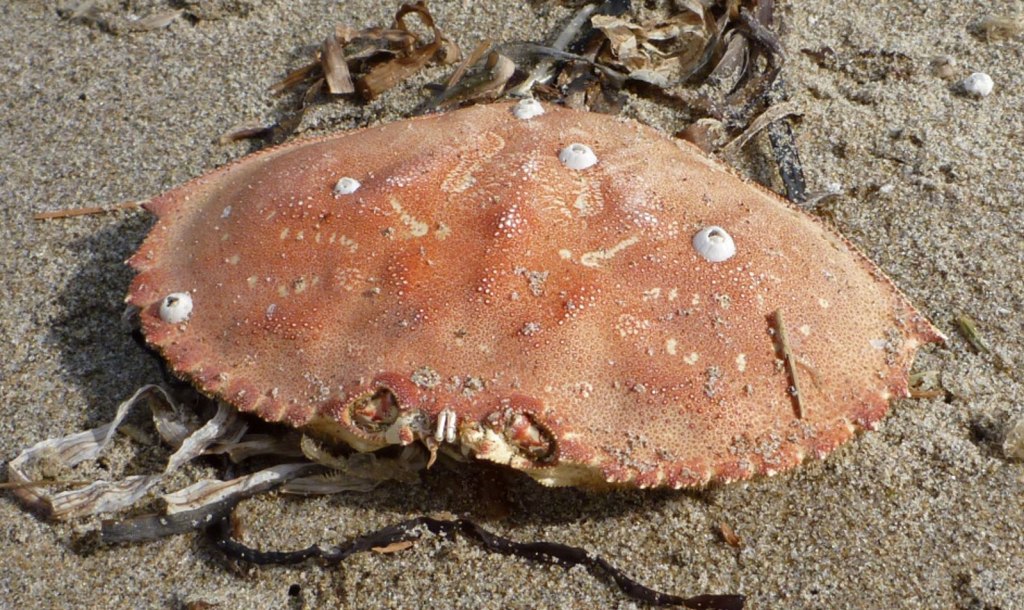
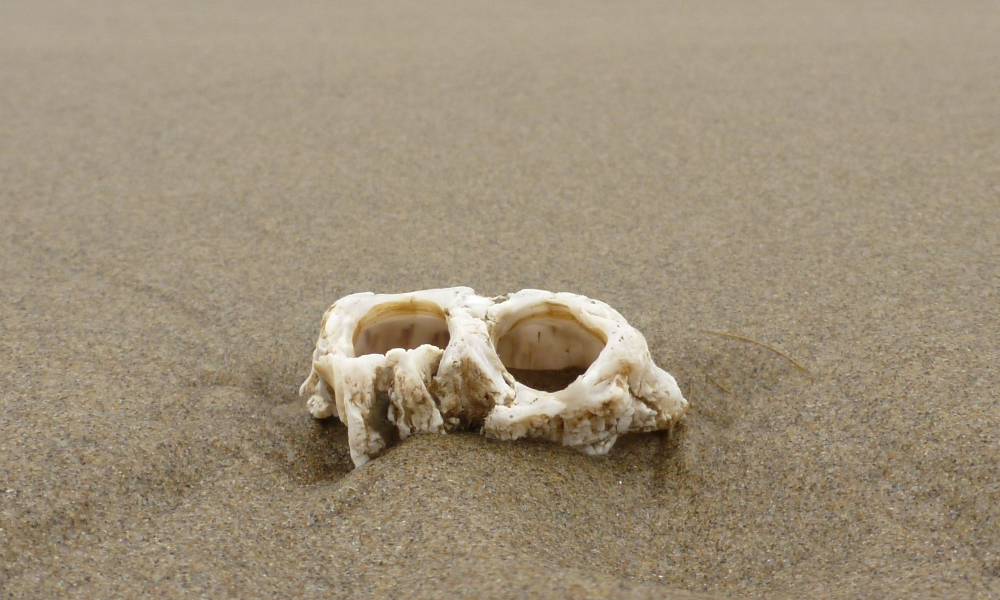
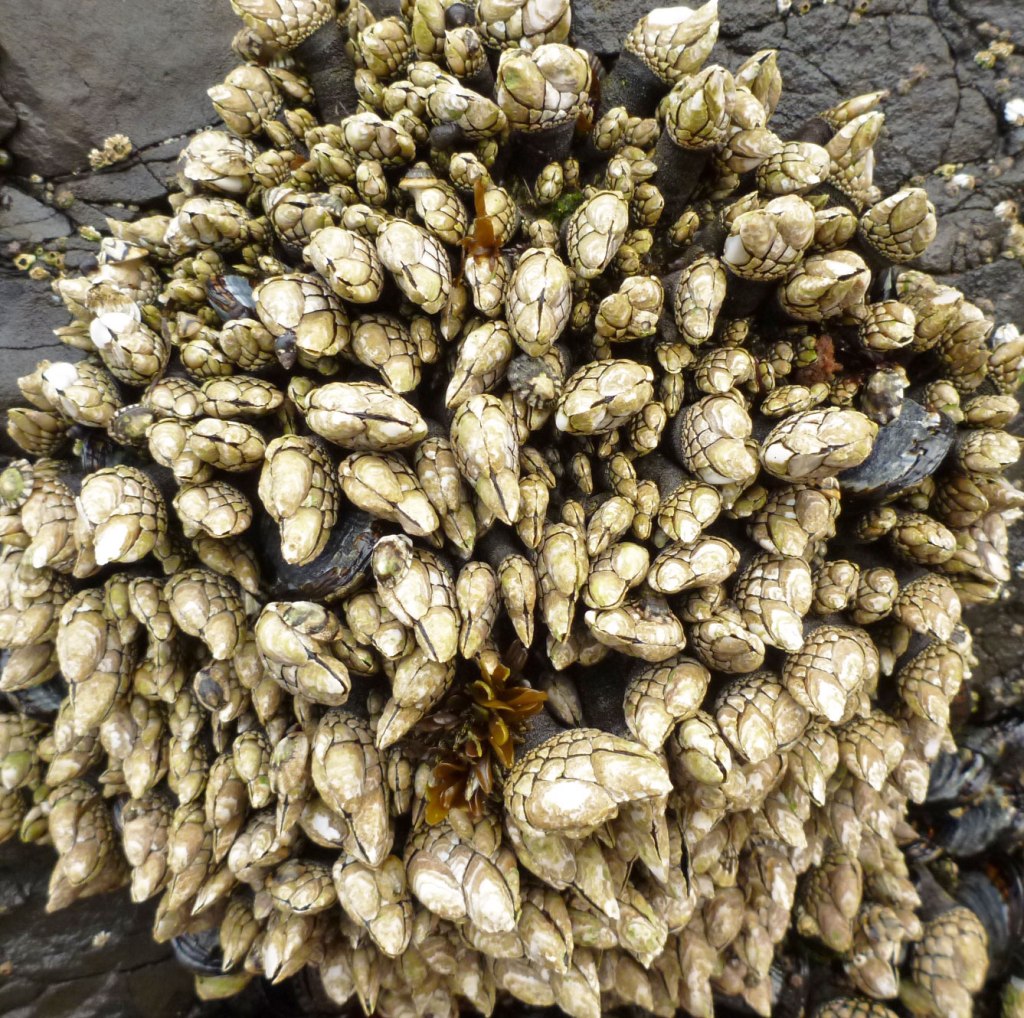
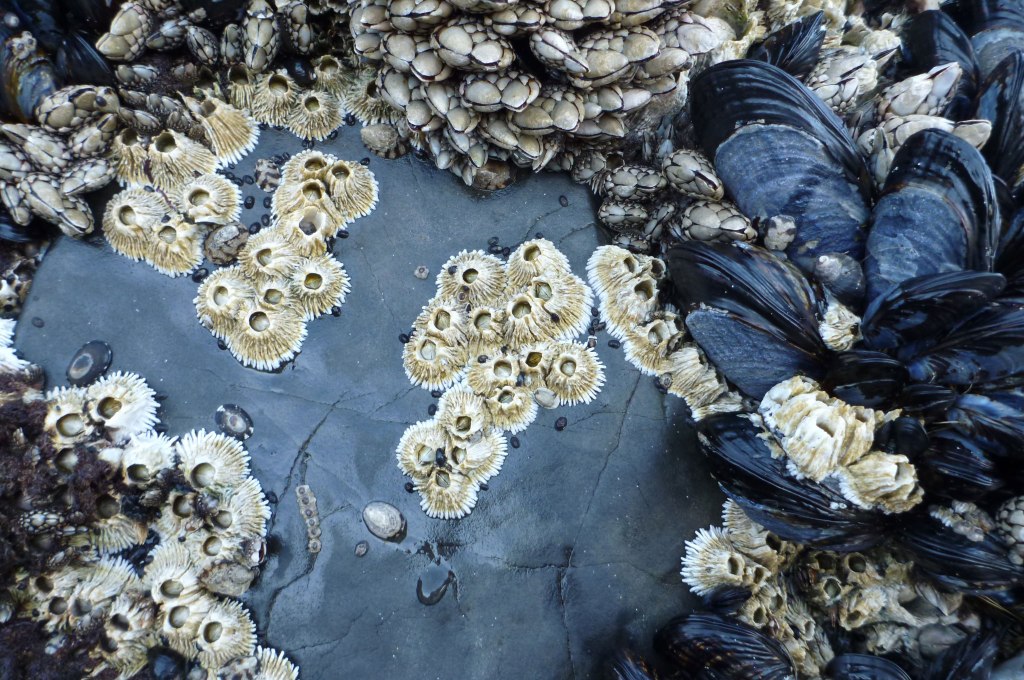
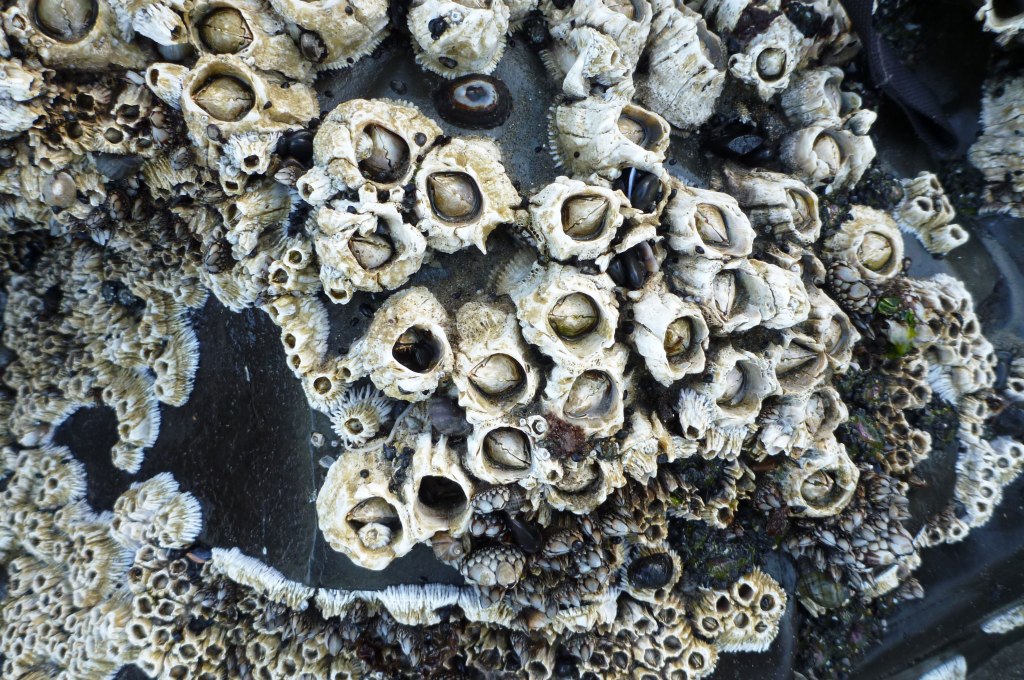

Acorn barnacles live in the mid and high intertidal zones, where they can be incredibly abundant.
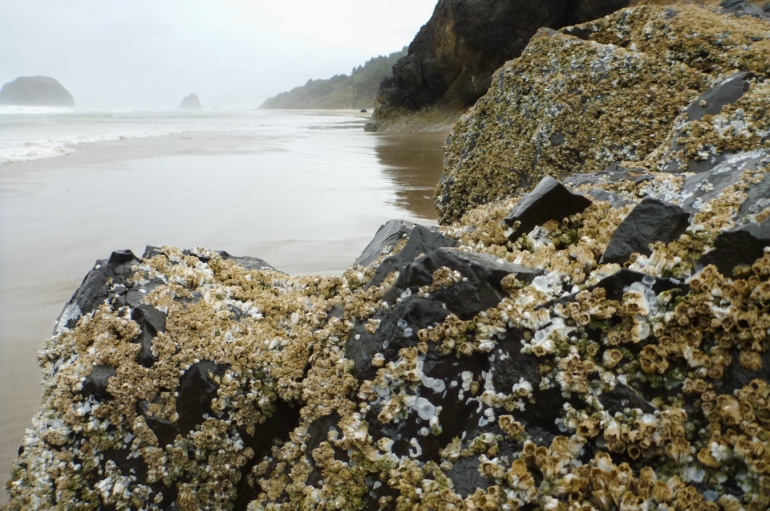
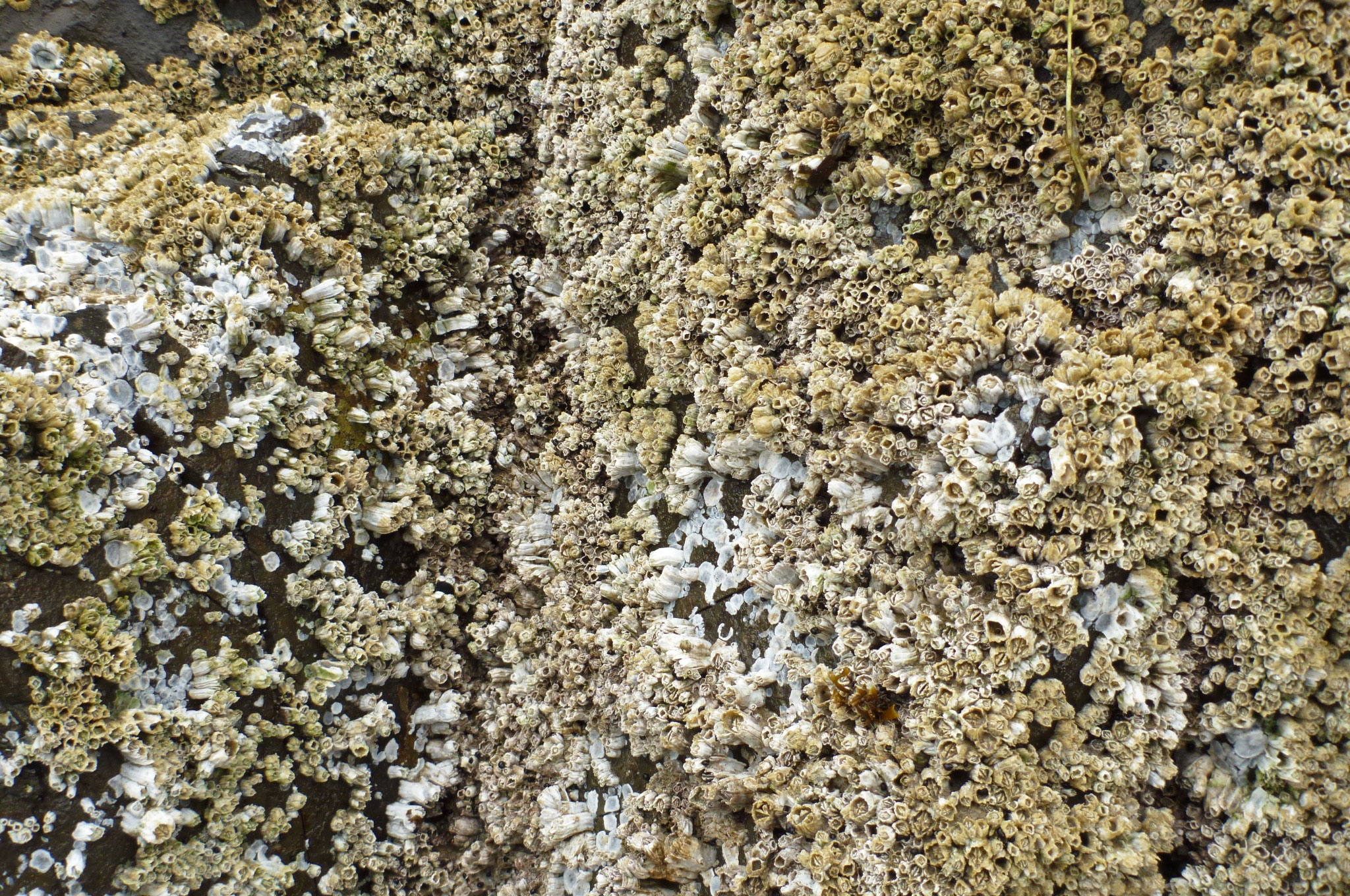
The whitish patches in both of the above photos illustrate the effects of recent impacts, primarily from logs and other debris tossed into the barnacle zone by heavy surf. Acorn barnacles make up in abundance what they lack in size. While they can achieve a hefty 3/4″ in uncrowded conditions, these are only about 1/4″ high and wide.
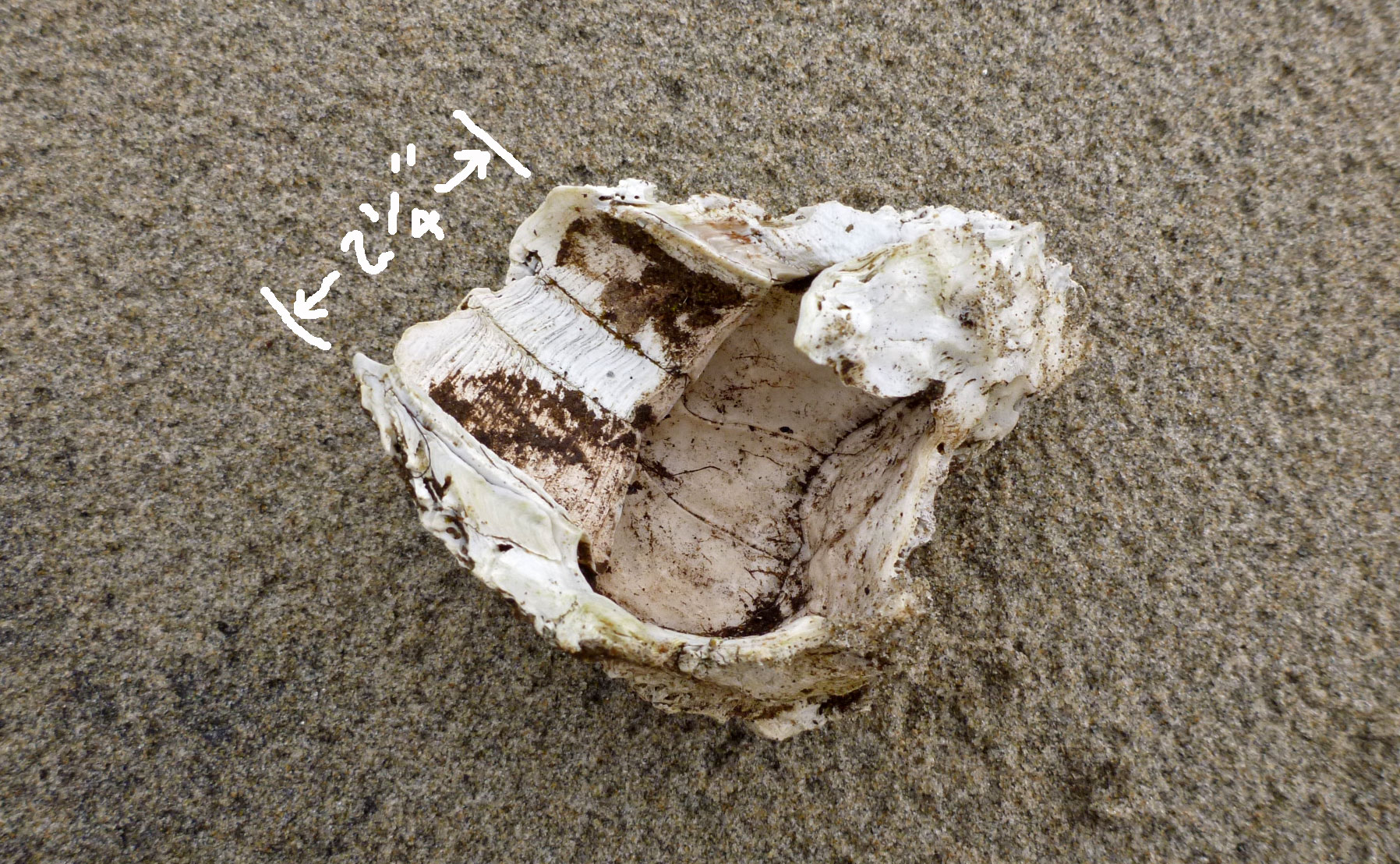
The giant barnacle, Balanus nubilus, is on the other end of the size spectrum. In this view, you look into the inside of the test, or shell, where the living barnacle once lived. Giant barnacles can be found in the low intertidal zone and below. I found this partial shell on the beach on November 2, after one of the first big storms of the season. To see other items I found in the wrack that day, check out Wrack Line 2013 and scroll down to November 2. Giant barnacles are one of the world’s largest barnacles, and the specimen shown above is good-sized.
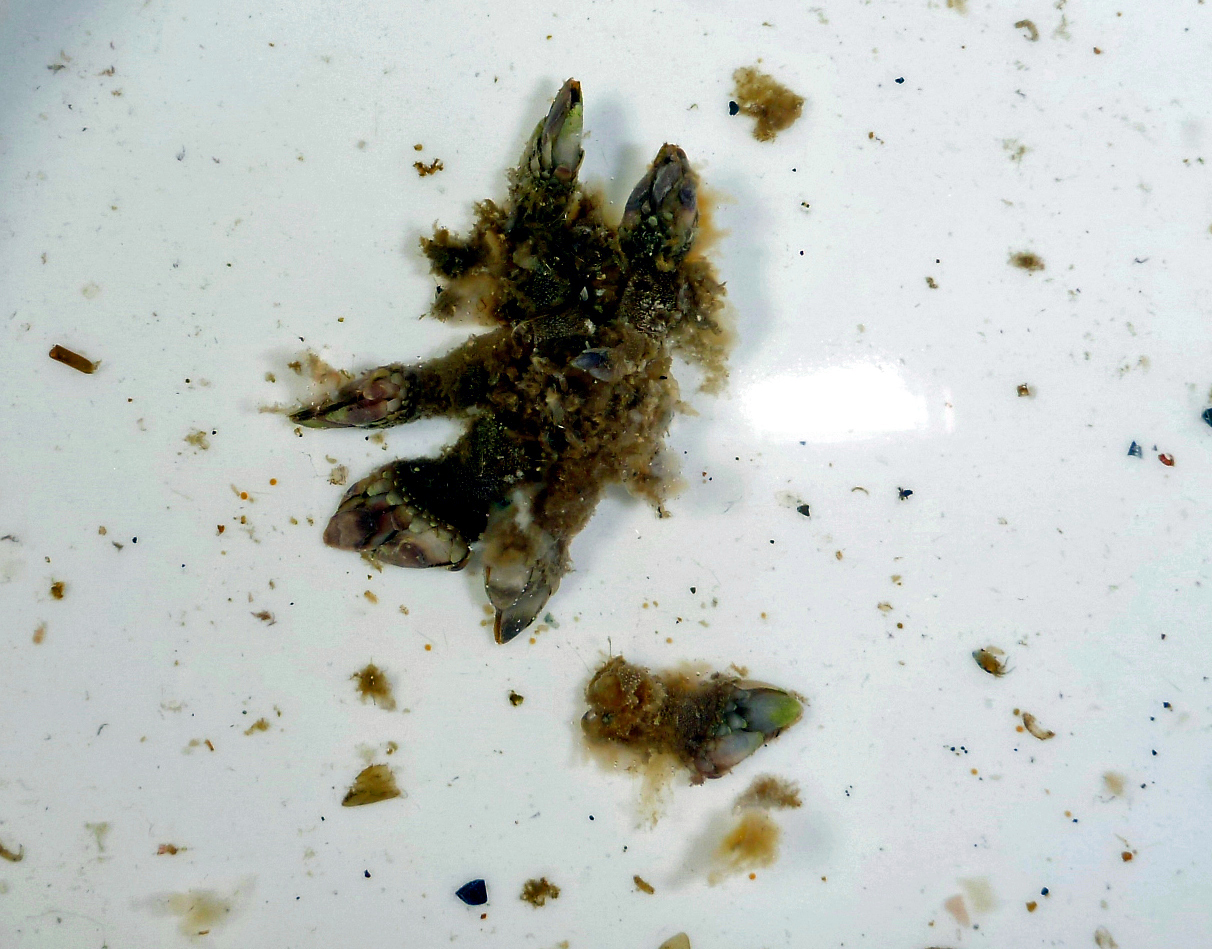
Once in a while, barnacles are preyed upon by surfperch. For example, I found this clump of goose barnacles in the stomach of a redtail surfperch. To see some other surfperch food items and a great video of mallard ducks dabbling in the surf zone, check out Dabbling with Crustacean Competition.
Note: This post was updated October 12, 2022
